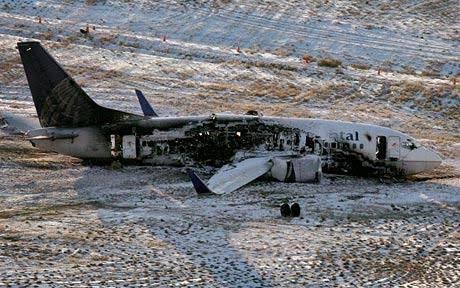Flair Airlines Flight Makes Belly landing Claiming 34 Lives
Flair Airlines Flight Makes Belly landing Claiming 34 Lives At Toronto
Flair Airlines Flight Makes Belly Landing, Claiming 34 Lives at Toronto
In a tragic and unimaginable turn of events, Flair Airlines Flight 231, en route from Vancouver to Toronto, was involved in a catastrophic accident on its final approach into Toronto Pearson International Airport. The flight, carrying 158 passengers and a crew of 6, made an emergency belly landing on the runway, claiming the lives of 34 individuals and leaving many others severely injured. The incident has sent shockwaves through the aviation industry, leaving both the public and officials grappling with the devastating loss.
The Flight’s Final Moments
The fateful flight departed Vancouver International Airport on schedule, with the crew and passengers unaware of the disaster that awaited them. Everything appeared normal during the initial part of the flight. However, just as the aircraft entered its descent into Toronto, things began to go wrong.
According to preliminary reports from the Transportation Safety Board (TSB), a series of mechanical failures occurred shortly before the plane began its descent. It was later determined that a malfunction in the landing gear system caused the aircraft to lose its ability to deploy the wheels for a proper landing. The crew quickly declared an emergency and began to circle Toronto Pearson while attempting to troubleshoot the issue.
Despite their best efforts to resolve the problem, it became clear that the landing would need to be made without the assistance of the plane’s landing gear. With limited time and resources, the pilots were forced to execute what is known in aviation as a “belly landing,” in which the aircraft lands on its fuselage rather than the wheels. This maneuver is highly dangerous and requires exceptional skill and precision, but even the most experienced pilots face tremendous challenges when performing such an emergency landing.
The Tragic Outcome
As the aircraft descended toward the runway, it was evident that the situation had escalated beyond control. The belly landing was executed, but the plane’s belly scraped along the runway at high speed, causing sparks and friction. The impact of the landing caused several fires to break out along the fuselage. As the plane came to a halt, the emergency slides deployed, and passengers began to evacuate as quickly as possible. However, the combination of fire, smoke, and panic made it difficult for many to escape in time.
Rescue teams arrived within minutes, but it was too late for 34 passengers, who were found trapped in their seats or overwhelmed by smoke inhalation and injuries sustained during the crash. The remaining 124 passengers were taken to nearby hospitals, many of them with severe burns, broken bones, and internal injuries. Emergency medical teams worked tirelessly to stabilize the survivors and ensure their safe transport to medical facilities across the region.
The Aftermath
In the hours following the disaster, the investigation began in earnest. Toronto Pearson International Airport was closed for several hours, and flights were redirected to other airports in the area. The aftermath of the crash left the airport staff, local authorities, and the entire aviation industry in shock. The sight of the charred remains of Flight 231, still smoking on the runway, would remain etched in the memories of many for years to come.
The families of the victims were notified by the airline, and support teams were set up to help them through the grieving process. Many relatives of the passengers were in disbelief, unable to comprehend how such a routine flight could end in tragedy. The airline, Flair Airlines, expressed deep sorrow over the incident and pledged to cooperate fully with investigators to determine the cause of the crash.
In the following weeks, numerous questions arose regarding the safety of Flair Airlines’ fleet and the specific circumstances that led to the failure of the landing gear. The airline faced intense scrutiny over its maintenance practices, and the crash sparked a wave of concern over the safety of low-cost carriers in general. While low-cost airlines have made air travel more accessible, many critics pointed out that safety measures and rigorous maintenance checks should never be compromised in the name of cost-cutting.
The Investigation and Findings
The Transportation Safety Board of Canada (TSB) launched a thorough investigation into the incident. Preliminary findings suggested that a combination of mechanical failure and human error may have contributed to the tragic event. The malfunction of the landing gear was identified as the primary factor that led to the emergency belly landing. The investigation also focused on whether the aircraft’s maintenance records had been up to standard and whether any previous issues had been overlooked by the airline’s technical team.
While the investigation continued, the TSB urged the airline industry to reevaluate their emergency protocols for situations like the one encountered by Flight 231. The crash served as a reminder of how crucial it is for airlines to maintain the highest standards of safety, not just in terms of flight operations but also in addressing mechanical issues before they escalate into life-threatening situations.
The Impact on Flair Airlines
Flair Airlines, once a popular choice among budget-conscious travelers, now found itself facing one of the biggest crises in its history. In the wake of the crash, public confidence in the airline plummeted. Bookings dropped significantly, and many customers expressed concerns about flying with a carrier that had experienced such a devastating accident. The airline quickly pledged to improve its safety protocols, promising more stringent checks and the introduction of enhanced training programs for its pilots and crew.
Flair’s executives also acknowledged the need for greater transparency in their operations, vowing to communicate more openly with passengers and the public about safety issues moving forward. While the airline was committed to honoring the memory of those lost in the tragedy, it faced an uphill battle in rebuilding its reputation and restoring trust among its passengers.
A Community in Mourning
The tragedy of Flight 231 left a scar on the Toronto community and beyond. Memorial services were held for the victims, and the airline pledged to make financial reparations to the families of those who perished. Many survivors and their families expressed their gratitude to the first responders who had risked their lives to rescue them from the wreckage.
Despite the overwhelming sadness and loss, the survivors’ stories of bravery and resilience served as a testament to the human spirit. Some passengers who survived the crash later spoke out about the heroic efforts of the flight crew, who remained calm and composed throughout the ordeal, guiding passengers to safety despite the chaos around them.
Conclusion
The tragedy of Flair Airlines Flight 231 serves as a stark reminder of the risks involved in air travel and the vital importance of safety measures in the aviation industry. While the airline and the authorities work to determine the exact causes of the crash, the lives lost on that fateful day in Toronto will not be forgotten. The survivors, their families, and the aviation community will forever carry the weight of the tragedy, while the incident itself serves as a sobering lesson in the fragility of life.





